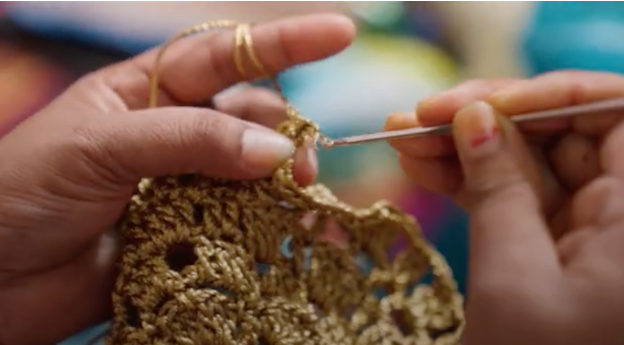Creative Manufacturing And Handmade With Plastic Derivatives And Substitutes
Dec 24, 2022 | Medini perera
 The relationship between the demand for sustainable production and the creative manufacturing sector.
The creative manufacturing sector has been around for a while, and during that time, it has undergone numerous changes and developments that have helped shape it into what it is today. This sector of the economy sells everything from furniture to fine art. generating more than 50 million jobs worldwide and 6.1% of the world's gross domestic product. Given the size of the creative manufacturing sector, the raw resources it uses—primarily plastic, leather, and other non-sustainable raw materials—have an inevitable effect on the environment. Future generations place a high value on environmental safety and sustainability, which are now worldwide influences on producers and consumers. The following statistics serve as the pudding's proof.
The relationship between the demand for sustainable production and the creative manufacturing sector.
The creative manufacturing sector has been around for a while, and during that time, it has undergone numerous changes and developments that have helped shape it into what it is today. This sector of the economy sells everything from furniture to fine art. generating more than 50 million jobs worldwide and 6.1% of the world's gross domestic product. Given the size of the creative manufacturing sector, the raw resources it uses—primarily plastic, leather, and other non-sustainable raw materials—have an inevitable effect on the environment. Future generations place a high value on environmental safety and sustainability, which are now worldwide influences on producers and consumers. The following statistics serve as the pudding's proof.
The top 5 plastic alternatives in the creative manufacturing sector.
It is obvious that customer preferences have changed, and they are willing to pay more for it. As a result, producers need to be aware that the growing concern over global warming has produced a motivation to look for eco-friendly alternatives to plastic. There are numerous raw materials that can be used. Bioplastics, recycled plastics, plastic alternatives, plastic derivatives, and plastic substitutes are some examples.The UNCTAD has identified five alternatives to plastic, along with each alternative's merits. which are exemplified below.
The bulk of the products produced by the creative manufacturing sector may be recreated by using one of the five alternatives listed above in place of plastic. These can be used in a variety of fields, including the arts, shoes, cosmetics, and more.
Manufacturers use environmentally friendly and sustainable practices.
Let's examine bags in the field of innovative manufacturing. Typically, leather and plastic are used to make bags of all shapes and sizes, including shopping bags, handbags, and evening bags. The materials are also included into the packaging and other parts of the bags.
Uashmama is a prime example. This company uses paper to make totes, backpacks, and purses that are sustainable and kind to the environment. These bags are constructed of a unique material they manufacture called AGGO, a washable paper that is strong, requires less water during production and contains no hazardous chemicals.
With this brand, there is no need to be concerned about the price point because it varies from as little as $12 to as much as $329, demonstrating their diversity. While maintaining a lower price point may provide firms a competitive edge, they shouldn't lose sight of the fact that consumers prefer and are willing to spend more on eco-friendly products.
Numerous startups in the creative manufacturing sector are emphasizing the production of environmentally friendly goods across a range of items. The graph below provides a brief look at the brands, their materials, and their data.
As we can see, a number of young, internationally focused businesses have developed eco-friendly plastics devoid of plastic-derived materials. Additionally, these products have gotten at least four-star reviews on numerous websites, including Google Reviews, Company Reviews, and through independent sellers.
Can larger businesses transition to environmentally friendly and sustainable alternatives?
Manufacturing procedures for items created without plastic or using plastic alternatives and derivatives are comparable to those used to make shoes, cosmetics, art supplies, and furniture. The largest challenge for companies, though, is obtaining the raw materials needed in their goods. The availability of these resources is a new problem that has emerged. The majority of startups obtain their raw materials from narrowly focused small groups of workers in developing Asian nations who make use of the tools and resources available to them. A notable example is axiology , which produces packaging through a women's cooperative in Bali using waste from the island that is not entirely recyclable.Additionally, as the demand for these resources increases, the supply may not be able to keep up. For this reason, purchases of these raw materials, particularly by higher quality companies and customers, should be encouraged.
However, the demand and supply problem won't materialise for a while because the raw material accumulation is still in its early phases and because as demand increases, new routes and suppliers will become available.
Businesses can adapt to this step in a staged manner by starting with the smallest and simplest raw materials and moving up to the most difficult. For instance, a jewellery producer could start with packaging, which is the easiest place to seek for alternatives to plastic, like paper, before moving on to the hooks of earrings and bracelets, then looking for beads and other accessories that are obtained ethically and sustainably. The quickest method to make the transition to sustainable products is to start the process step by step, going from the easiest to the hardest. To find out where and how to get sustainable raw materials, businesses must also keep an eye on rivals and other sectors of the economy.
What can we take from this ?
The demand for sustainable products is higher than it has ever been and will only increase, so businesses must switch their raw materials to sustainable plastic substitutes or derivatives if they want to stay ahead of the curve and keep up with the changes. Finding a supplier now, before demand soars, is also essential. This will give their companies a competitive edge thanks to environmental certifications like the plastic-free and plastic-zero certifications, which will give them an even bigger edge.
Citations
38 environmentally conscious consumers statistics ᐈ[2022]. Renolon. (2022, August 8). Retrieved December 13, 2022, from https://www.renolon.com/environmentally-conscious-consumers-statistics/
Axiology. (n.d.). World's first zero waste 3-in-1 crayons. Axiology. Retrieved December 18, 2022, from https://axiologybeauty.com/
100% sustainable shoes, like no other. LØCI® Vegan Sneakers. (n.d.). Retrieved December 18, 2022, from https://lociwear.com/
Kremer Pigmente GmbH & Co. KG. (n.d.). Home. Kremer Pigmente Online Shop. Retrieved December 18, 2022, from https://www.kremer-pigmente.com/
Outer: The perfect outdoor sofa is now within reach. Outers Product. (n.d.). Retrieved December 18, 2022, from https://liveouter.com/
Recommended








